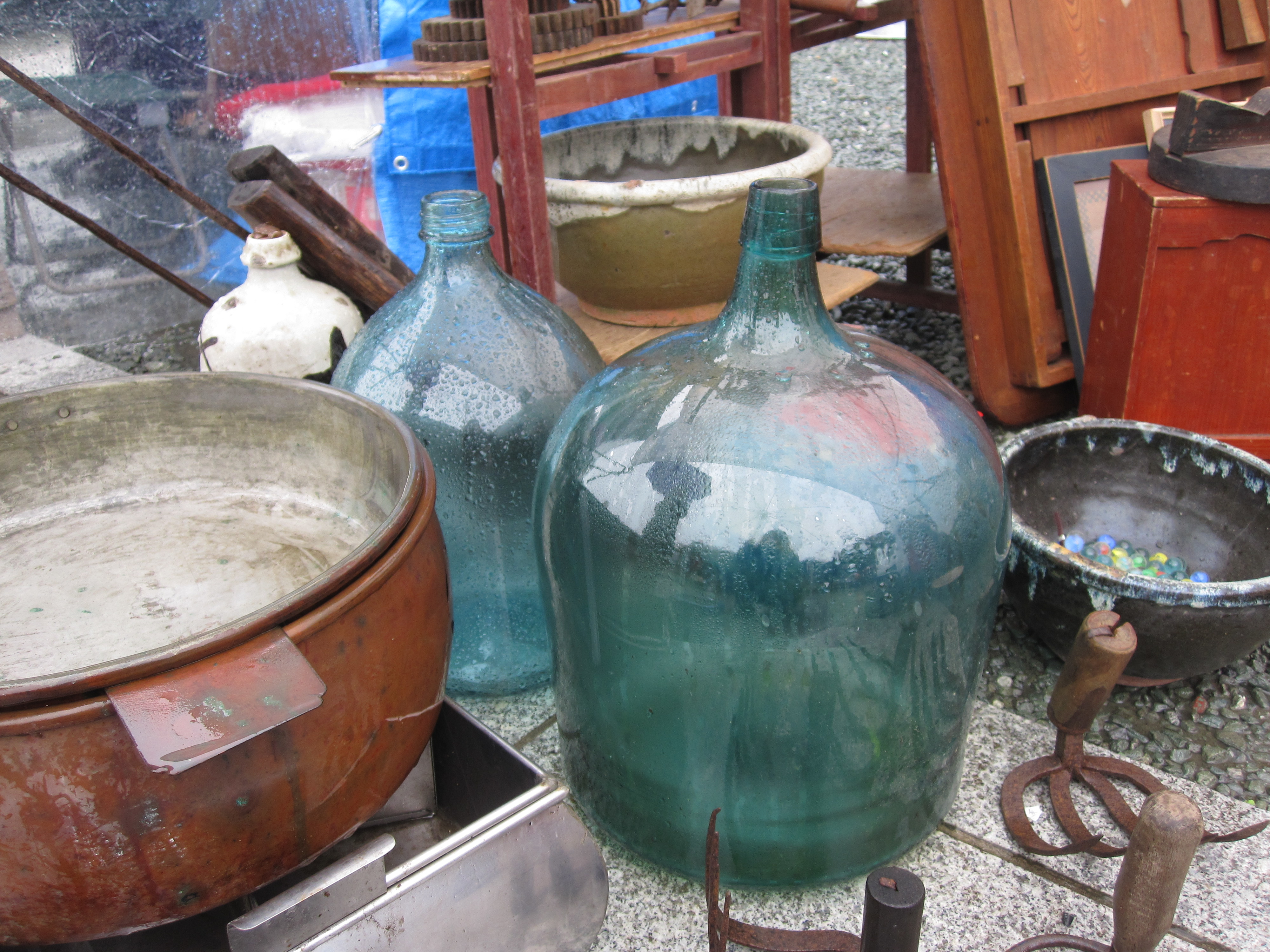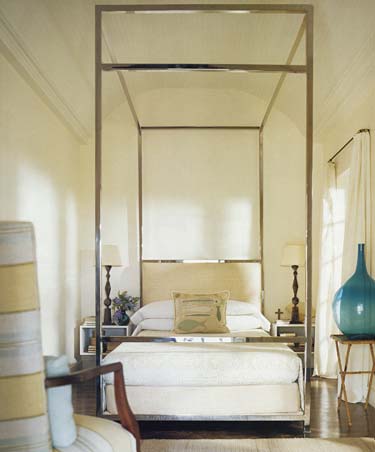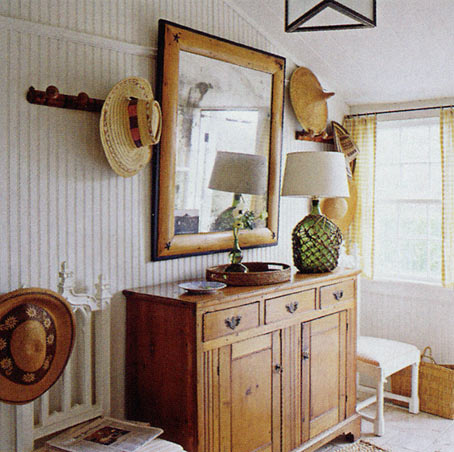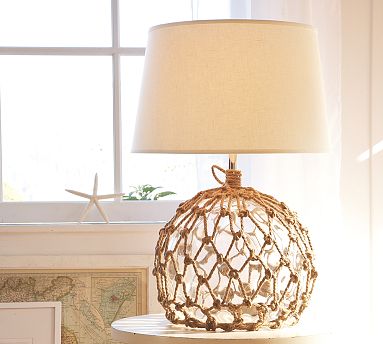Well, they say “good things come in small packages”. I wish there was a similar adage for “great bargains come from rainy day shrine sales”. There were only about 20% of the vendors present, everything was covered in plastic tarps with only a few brave customers wandering around – mostly foreigners (the only ones foolish enough to be there). We jumped in and had the best day! Let me show you what I found…
First, this huge turquoise bottle originally used to hold alcohol of some kind. The dealer offered me his “rainy day special price” and I couldn’t resist.
I have long adored the interiors designed by Tom Scheerer, the king of the giant glass bottle. If you page through his portfolio or back issues of shelter magazines, there is not a single project that doesn’t include a gorgeous glass bottle in some way.
Often, the bottles have been converted into lamps.
I was so excited about my bottle, that I was unprepared for what I found next. I had long admired these Japanese fishing floats in magazines, but never seen one for sale in Japan. I got the large aquamarine one to go with my giant bottle. It has its original net and is in great condition. I had thought they were asking a bit too much for it, but luckily the dealer who sold me the giant bottle came over and got involved. He convinced them to give me a rainy day special price too!
Japanese glass fishing floats have been used by fishermen here for most of the last century. Floats continue to be in use today, but many have broken off from their nets and surf the Pacific Ocean, sometimes for decades. The floats follow the ocean currents and tend to wash up on shore in Alaska, the Pacific Northwest and islands throughout the region, especially after storms. There are devoted beachcombers who go out and hunt for these treasures, sometimes even flying to a remote area. Take a look at Glass Float Junkie’s blog for more history, information and great photos.
Modern day collectors love them for their decorative possibilities. Thom Filicia hangs three as an accent in a lake house.
Jeffrey Bilhuber has used two as pendants in his adorable Rose Cottage on Nantucket Island. They are like jewelry in the room!
Tom Scheerer has even managed to inspire one into a lamp.
The popular market place has picked up on the trend as well. Pottery Barn had a Japanese float lamp, which is no longer available, but can be found on eBay…
and currently has the giant bottles.
Japanese glass floats have inspired artists as well. Dale Chihuly, the world-renowned glass artist has a series called Niijima Floats. Around 1990 he visited a glass school on the island and it reminded him of “the Japanese fishing floats, which [he] used to collect on the beach when [he] was a kid in Washington State on the Pacific Ocean.” Chihuly’s floats can be giant – up to 40 inches in diameter – and brightly colored, but I found these sheer blue ones particularly beautiful.
I haven’t had a chance yet to clean mine up and look for markings. More details to follow, including where I plan on using my finds, but as many of you know, I am renovating a bathroom at my NJ beach house (hint, hint). Other bloggers have written about these floats and I recommend posts at Completely Coastal and Things that Inspire.
I am going to leave you with this most beautiful image. Maybelline Te of Frou La La took this photo of the loggia at a friend’s house in the Philippines just resplendent with hanging floats.
Wow!
Image credits: 1 & 4. me, 2, 3 & 7. Tom Scheerer, 2. photo credit: Pieter Estersohn, 3 & 7. photo credit: Simon Upton, 5. Thom Filicia, 6. Jeffrey Bihuber in Architectural Digest, September 2003, photo credit: Peter Vanderwarker, 8 & 9. Pottery Barn, 10. Dale Chihuly, 11. Maybelline Te











